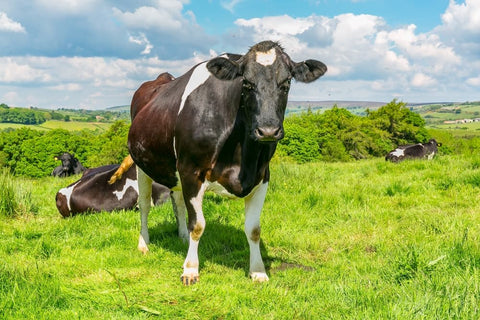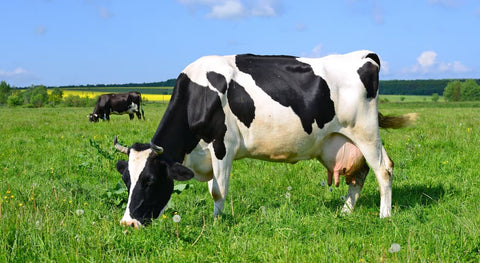Can Flies Harm Cattle?
No one likes flies. Not you, not anyone you know, and definitely not your livestock. Flies are a nuisance for humans, but they can pose even greater risks for livestock. Cattle flies have been shown to harm cattle, which is why fly control among your cattle population should be one of your priorities. Keep reading to learn more about the effects of cattle flies on livestock, as well as what you can do to help your cattle combat the flies.
Table of Contents
- The Harm Cattle Flies do to Cattle
- Cattle Flies Bring Disease
- Cattle Flies Lower Yields
- Fly Control Through Feed
The Harm Cattle Flies do to Cattle
Horn flies, face flies and stable flies are three species that can both harm your cattle and impact your farm economically. In fact, livestock producers in the U.S. lose more than $1 billion annually to horn flies alone, thereby making the species one of the most damaging cattle ectoparasites on the planet. Consider a few ways they can do a number to your cattle:
Cattle Flies Carry Disease

Mosquitoes aren’t the only disease-carrying flying pests hovering outdoors this summer. Flies can be just as dangerous. Cattle flies can spread disease to your cows, and the familiar pinkeye is only the beginning. Mastitis, anthrax, typhoid fever, amoebic dysentery, tuberculosis, cholera, Newcastle disease, salmonella—they are all diseases that flies could transmit to your cattle. By controlling your fly population, you can make big inroads in your disease prevention and mitigation efforts.
Cattle Flies Lower Production Yields
Due to the stress, illness and distraction they can cause cattle, flies are also responsible for tremendous production losses that could significantly affect the success of your business. This affect upon production is generally due to decreased weight gain and/or lower milk yields among your livestock. This occurs because fly-affected cattle will spend time stomping, tail swishing, lying down, standing in groups, sitting in the middle of a stock pond, or doing just about anything to get the flies off of them. During these times, they will not eat appropriately, and by not eating, they're not putting on mass and producing milk.
Fly Control Through Feed
Fly season begins in the spring and reaches its peak during the warmer months of the year. However, if you don’t use a strong fly control program year-round, you can easily fall behind in your efforts to control flies. That is why you want to prepare now!

You can battle the flies with feedthrough insect growth regulator (IGR) larvicides, such as JustiFLY. These feed additives are an effective means of stopping the lifecycle of the flies, because they prevent flies from laying eggs within the manure of your cattle.
And using JustiFLY for fly control is quite simple. Add it to your cattle’s feed, and let them consume it as normal. After they do, the larvicide passes through the animal and starts to work in the cattle manure where flies lay their eggs. The fly larvae feed on the manure and ingest the larvicide, which inhibits the formation of the chitin that creates their exoskeleton. The flies hatch, but cannot survive and die immediately. This breaks the flies’ lifecycle, making it harder for new generations of flies to come along and bother your cattle. Overall, your cows will be happier, healthier, and more productive.
